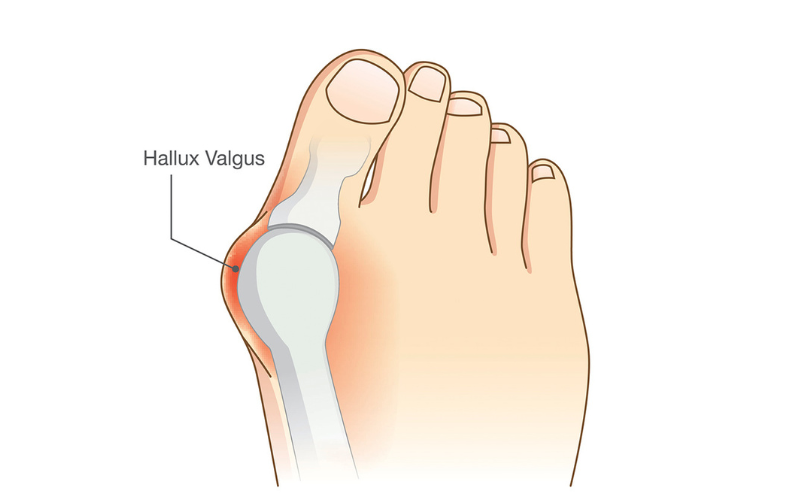 Hallux valgus
are bony bumps that form at the base of the big toe joint. They occur when the
big toe leans toward the second toe, causing the joint to protrude and become
misaligned. Bunions can cause discomfort and make it difficult to wear certain
types of shoes.
Hallux valgus
are bony bumps that form at the base of the big toe joint. They occur when the
big toe leans toward the second toe, causing the joint to protrude and become
misaligned. Bunions can cause discomfort and make it difficult to wear certain
types of shoes.
Causes of
Bunions:
- Genetics: A family history of
bunions increases the likelihood of developing them.
- Foot Structure: Certain foot
shapes, such as flat feet or low arches, can make a person more prone to
bunions.
- Footwear: Wearing tight,
narrow, or high-heeled shoes puts pressure on the toes, contributing to
bunion formation.
- Arthritis: Inflammatory joint
conditions, such as rheumatoid arthritis, can worsen bunion development.
Symptoms
of Bunions:
- Bony Bump: A noticeable bump
at the base of the big toe joint.
- Pain and Soreness: Pain and
discomfort around the affected joint.
- Swelling and Inflammation:
Redness and swelling in the area.
- Restricted Movement: Limited
mobility in the big toe joint.
- Corns and Calluses: Friction
between the toes can lead to the development of corns or calluses.
Treatment
for Bunions:
- Comfortable Footwear: Opt for
wide-toed shoes with proper arch support to alleviate pressure on the
bunion.
- Padding or Orthotics: Use
bunion pads or custom orthotics to cushion the area and correct foot
mechanics, which may slow the progression of bunions.
- Ice Therapy: Applying ice can
reduce inflammation and ease pain.
- Toe Exercises and Stretches:
Strengthening the muscles around the toes through exercises can help
manage bunion symptoms and improve flexibility.
- Bunion Splints or Cushions:
Specially designed splints or cushions can help straighten the big toe and
reduce discomfort by relieving pressure on the bunion.
Proper
management of bunions involves a combination of supportive footwear, orthotics,
and consistent care to reduce pain and slow the progression of the condition.
 Hallux valgus
are bony bumps that form at the base of the big toe joint. They occur when the
big toe leans toward the second toe, causing the joint to protrude and become
misaligned. Bunions can cause discomfort and make it difficult to wear certain
types of shoes.
Hallux valgus
are bony bumps that form at the base of the big toe joint. They occur when the
big toe leans toward the second toe, causing the joint to protrude and become
misaligned. Bunions can cause discomfort and make it difficult to wear certain
types of shoes.